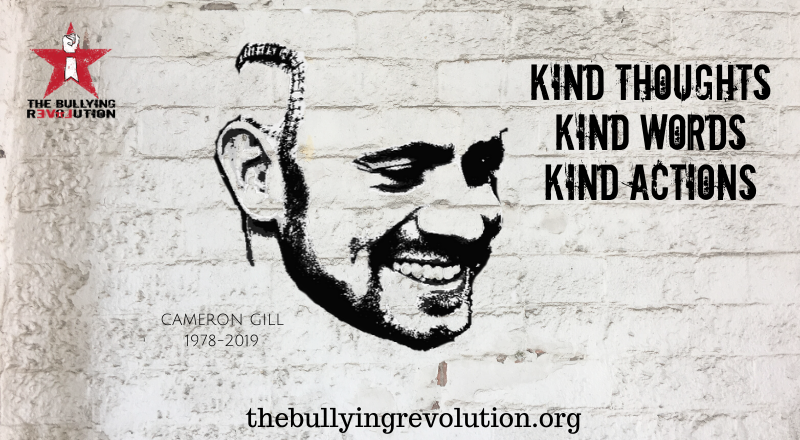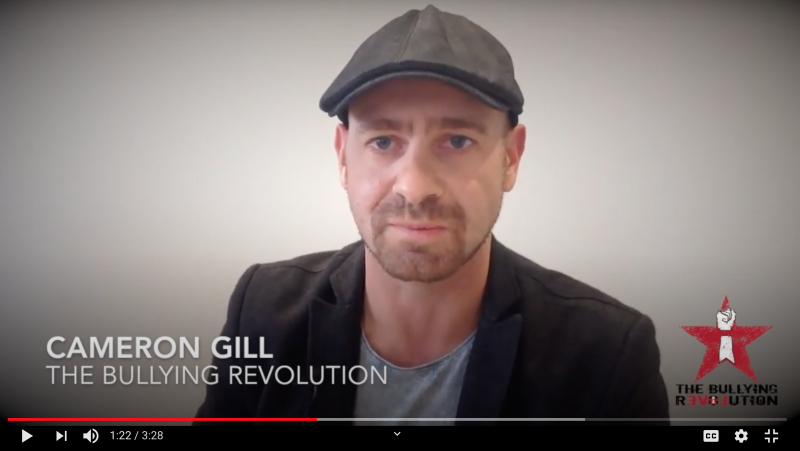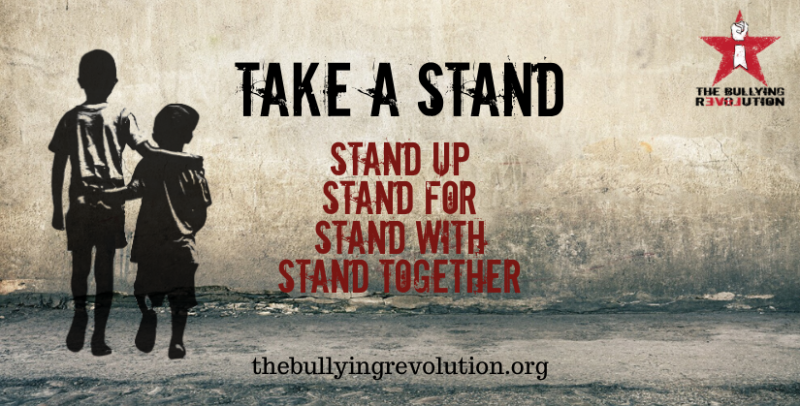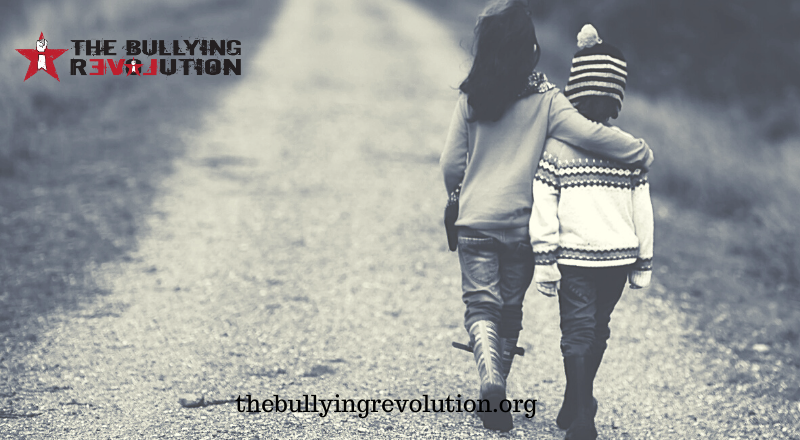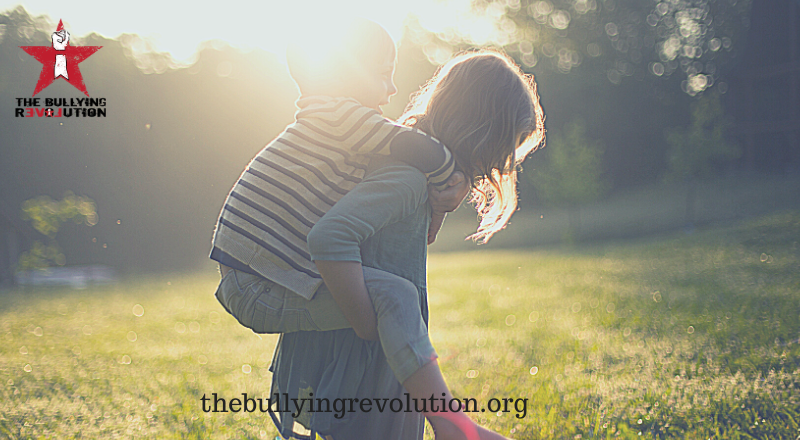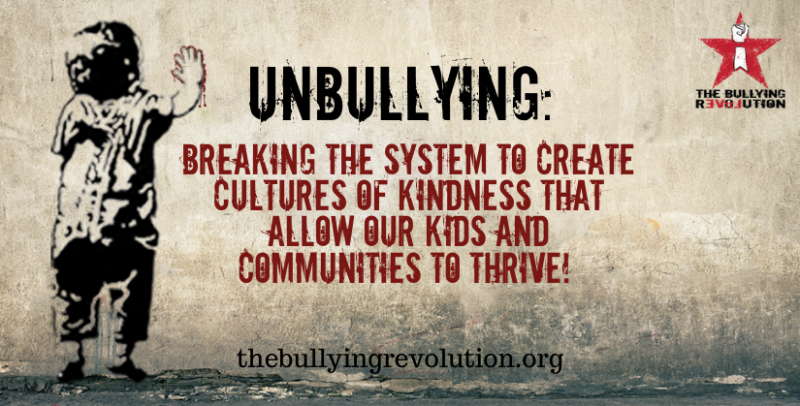A few months ago, our co-founder, Cameron Gill, wondered if we should change the name of The Bullying Revolution to “The Kindness Revolution”. We had already changed our name from “I Stand Against Bullying” because we felt that “standing against” implied an aggressive stance that was often associated with “bullying back” and punishment approaches. We did not want to be perceived that way. He also wondered if the fist in the logo was too aggressive. We discussed this for a while, and decided not to change the name. Cameron didn’t really want to change the name again, or the logo.
We like the juxtaposition of being strong, different and revolutionary, alongside our approach of kindness, compassion and empathy. We love our grungy, street art branding speaking a perhaps unexpectedly gentle message. We like standing out, standing up and standing with, without standing against. The word LOVE reads backwards in the word rEVOLution. The fist is one of solidarity, not of battle. If you look closely, you’ll notice the fist in the logo is separated from the arm at the wrist. The fist image used to be the “I” in our original “I Stand Against Bullying” logo.
Evolution
Cameron was transparent about our journey and our history, and was always willing to embrace change when new information made old ideas redundant. Even as we evolved, he remained open about the foundations of who we are. The revolution is not a war. It is not a battle. It is simply about creating real change.
The background of the image that accompanies this piece is a photo of a brick wall taken on a recent visit to Alcatraz Island, San Francisco. It is a historic place of human cruelty, resilience and survival, in a city that Cameron loved to visit. The whitewashed brick wall was screaming for some Banksy style stencilling. Cameron loved street art, and he loved to create art in this style, and as soon as I saw this wall, I could see his face on it. The photo, taken a few days after his first brain surgery, staples proud and prominent, grinning like the Cheshire cat and ready to get back to life, felt like the perfect picture to capture his vibrancy and vitality for living well. “Banksying” Cam himself felt like the perfect way to honour him.
Use your time well
I can hear him asking, “Is this the best use of your time?” (It probably wasn’t; I am slow and minimally skilled at graphic design!) and I can hear him reminding me, “Use your time well.” His life and choices serve as a daily reminder that our time here is short, and that we can use it to choose how and when we make our difference in the world. Cameron would not be a fan of me making it “all about him”, but he was a huge fan of keeping it real.
This post is not a eulogy. It is simply a sharing and a reminder of the value of focusing on leading a passionate, meaningful and most importantly, a kind life, and how that can inspire people around us. We are privileged to be able to use the enthusiasm – that he both brought out in us, and also instilled in us – to act to create change. Instead of just feeling that things need to change, we are able to excite and energise others to engage as well. To spark others, and to be sparked, is really something. This week, it was the World Anti-bullying Forum. Next week, it will be something else. There are no limits to our opportunities to share a message of kindness with the people we encounter.
The Bullying Revolution is about more than just bullying. It is about approaching everything from a “kindness first” position. Cam believed that kindness was the solution to almost all the world’s problems. (That, and planting trees.) Not just being kind, but being kinder than necessary, kinder than it seems is possible, at every opportunity.
Kindness Virus
What would it take to make kindness the “go to” response to everything, even – Cam would have probably asked, especially – as a response to unkindness? What would it take to stop people responding with surprise, when offered a smile, a kind word, or a helping hand? The number of times this week that we have heard people comment with surprise, “Oh my gosh, that is so kind of you!” is both interesting and kind of sad. We have been at a gathering of people from all around the world who have made it their life’s work to try to understand and eradicate bullying and all forms of unkind behaviour.
Why are people so surprised, especially within this population, when offered a chair at a shared table, when a door is held open for them, when a pen is handed over as they scramble unsuccessfully to find their own? Why are our expectations of fellow humans so low?
The words on the image that accompanies this piece, “Kind thoughts, kind words, kind actions” were not Cameron’s words. They are words that have been spoken and reiterated in many different variations and translations across the globe for centuries. However, the words were a code he absolutely lived by. Seeing less important messages and stories “going viral” every day, he envisioned a kindness virus. What would it take to send kindness viral?
Think with kindness, even when you are angry or hurt. Speak with kindness, even if the words are difficult to say. Kind actions will follow. The work of The Bullying Revolution is indeed about creating a kindness revolution. We won’t be changing who we are. We are Cameron.
Teresa Butler
The Bullying Revolution.

